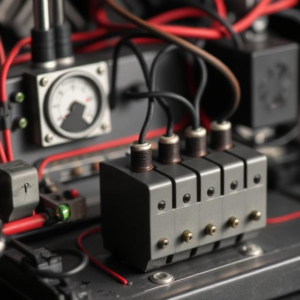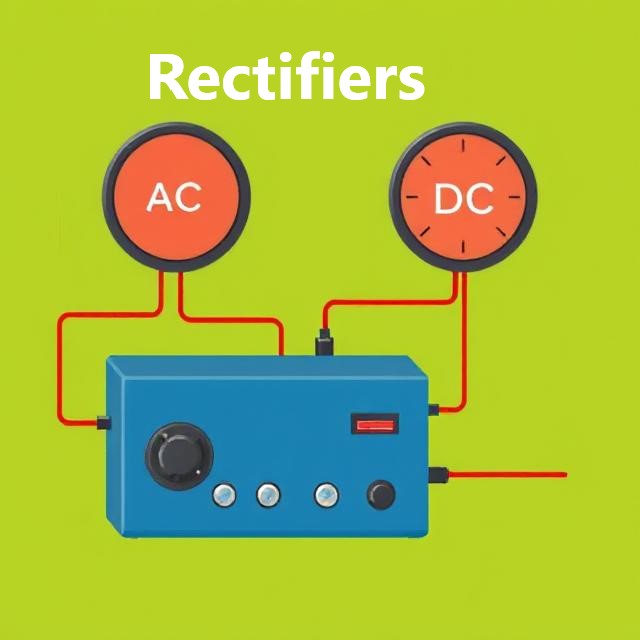A rectifier is an electronic device that converts alternating current (AC) into direct current (DC). To understand this, let’s break it down into simple parts:
What is AC and DC?
- AC (Alternating Current) is the type of electricity that changes direction periodically. This is the kind of electricity you get from power outlets at home.
- DC (Direct Current) is the type of electricity that flows in one direction, like the power in a battery.
Now, many electronic devices (like your phone, laptop, and even TVs) use DC for operation, but the electricity supplied to homes is AC. That’s where rectifiers come in—they change AC to DC so that electronic devices can use it.

Types of Rectifiers
There are a few different types of rectifiers, but the main ones are:
- Half-Wave Rectifier
- Full-Wave Rectifier
1. Half-Wave Rectifier
- A half-wave rectifier only lets one half of the AC wave through.
- It blocks the other half of the AC cycle.
- This is done by using a single diode. The diode only lets current flow in one direction, so when the AC current changes direction, it gets blocked.
Pros: Simple design, inexpensive. Cons: It only uses half of the input AC power, making it inefficient.
2. Full-Wave Rectifier
- A full-wave rectifier lets both halves of the AC wave pass through, but it flips the negative half to make it all positive.
- It uses two diodes (in a center-tapped transformer) or four diodes in a bridge configuration to do this.
Pros: More efficient than a half-wave rectifier because it uses the full AC wave. Cons: More complex and requires more components.
How Do Rectifiers Work?
Let’s say the AC waveform looks like a sine wave, with the voltage going from positive to negative and back. When you use a rectifier:
- In a half-wave rectifier: When the AC is positive, the diode allows the current to pass. When the AC is negative, the diode blocks it.
- In a full-wave rectifier: During the negative half of the AC wave, diodes change the direction of current flow to make it positive, so you always get a positive output.
Why Are Rectifiers Important?
Many devices run on DC power, but we get AC from the power grid. Rectifiers are used in things like:
- Power supplies for electronic devices (like your laptop charger).
- Battery chargers that convert AC from a wall outlet into DC to charge batteries.
- Signal processing in radios, TVs, and other communication devices.
Simple Analogy:
Imagine AC is like a swinging pendulum, moving back and forth. A rectifier makes sure that, no matter which direction the pendulum swings, it only goes one way (either always forward or always backward). This ensures you get a consistent, usable flow of electricity, which is what DC is.
In Summary:
A rectifier is a device that changes AC into DC. There are two main types: half-wave rectifiers (which only use one half of the AC wave) and full-wave rectifiers (which use both halves of the AC wave and are more efficient). Rectifiers are essential for powering electronic devices that require DC electricity, but are plugged into AC power sources.











